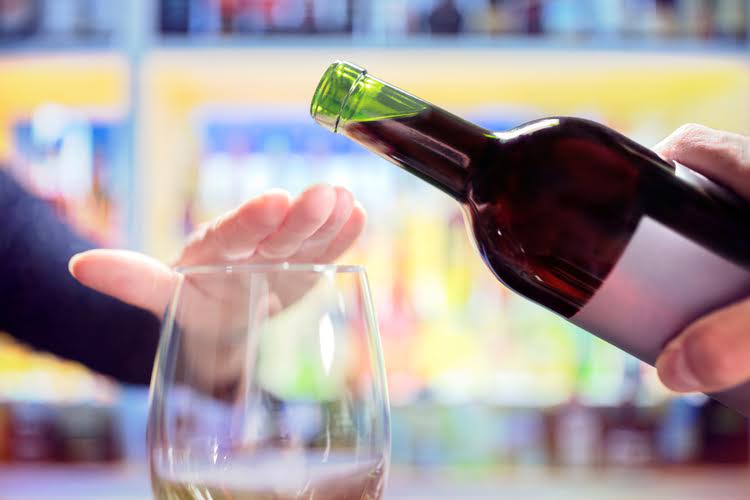Join the Avenues NYC family and take advantage of Avenues NYC’s unparalleled sober living and recovery services. We strive to provide safe, loving and life building recovery homes for those who suffer from substance use disorder and mental health seeking recovery to live productive and meaningful life. Transcend Recovery Community provides many services for continued rehabilitation. Depending on the city, neighborhood and services offered, rent can range from $300 to $2,000 per month. Some sober homes do not require residents to pay utility bills, but utilities may be rationed to avoid waste. Some sober living homes have exercise equipment, fitness areas, recreational space, pools and cookout areas.
Avenues Sober Living NYC
Some of the immediate changes you will need to make will be obvious—like not hanging around the people that you used with or obtained drugs from. After all, you can't hang around your drug dealer or old drinking buddies and expect to remain sober for very long. If PAWS is severe or if you're experiencing prolonged symptoms, a medical professional can help you work through them and remain in recovery without relapse. Depending on the type of dependency, PAWS can last from six months to two years after you stop using drugs or alcohol.
Pottstown eyes local regulation of ‘sober homes’ for recovering addicts, alcoholics – The Mercury
Pottstown eyes local regulation of ‘sober homes’ for recovering addicts, alcoholics.
Posted: Sat, 10 Feb 2024 08:00:00 GMT [source]
Sober Living Houses
They can help motivate a person to remain sober to reach the next milestone. Detox can occur in a hospital setting or as the first part of inpatient or outpatient rehabilitation. We will help facilitate connections to resources within our program as well as the community that provides a sustainable foundation to their recovery .
What Should I Look for in a Sober Living House?
Developing a structured routine can help a person stick to their sobriety goals, make healthy decisions, and reduce the likelihood of triggers and relapse. Establishing a routine with regular sleep and support group attendance can reduce stress and help you stay sober. This article will describe sobriety in more detail, the challenges a person faces while working to stay sober, the options for treatment, and tips for building a sober lifestyle. At LIV Recover Sober Living we aim to provide a safe and loving place for residents to continue their journey in sobriety.
The History of Sober Living Homes
- Receiving additional support in the early days post-treatment can significantly enhance the chance of achieving long-term sobriety.
- While Level 2 homes don’t have recovery services onsite, there’s usually a strict requirement for maintaining membership in a recovery group or sticking to an aftercare plan with a counselor.
- Since Transcend uses a holistic approach to healing compared to other outside providers, residents live and can partake in twice-weekly experiential classes and services.
- However, sober living homes are generally less expensive than inpatient treatment centers.
- Acknowledging and celebrating the hard work of recovery is helpful for keeping you motivated and reminding you why you took this brave step toward sobriety in the first place.
Sober living homes for the LGBTQ+ help them recover by focusing on self-acceptance, peer support, and mental health. Part of a recovery coach’s role is facilitating positive change in the client’s life. This can happen through setting goals, outlining actionable steps, providing support, and strengthening necessary tools for a healthier mind and body. That’s why we offer a supportive community of like-minded individuals who are all working towards similar goals. Some time is spent in a family member’s living room, where an interventionist explains to you how they are going to save your life, with your family deeply involved in the process.
How Do I Find a Sober House?
Use of this site constitutes acceptance of Sober Recovery's “Terms of Use”, “Privacy Policy”, “Cookie Policy”, “Health Disclaimer”, and “Do Not Sell My Personal Information”. The material on this site is for informational purposes only, and is not a substitute for medical advice, diagnosis or treatment provided by a qualified health care provider. Occupy your mind with other stuff avoid the activities that leads to relapse.
Services and Amenities
The types of services and programs that each sober living home offers will vary depending on the residence and a person’s specific needs. If you or a loved one is transitioning into recovery housing, it’s important to work with your treatment team to make sure the residence offers the appropriate care. Some sober living facilities provide substance-free transitional housing for only men or only women, meaning men live with men and women live with women. However, sober living homes are generally less expensive than inpatient treatment centers. The NARR created standardized language and definitions that are used to identify the different types of sober living homes based on the level of services and structure that they provide. The NARR refers to all such homes as “recovery residences,” which is the nomenclature we will use throughout this guide.
Question About Treatment
Although these new activities are healthy and productive, they can be a stumbling block to lasting recovery if they become a transfer addiction to fill the void left by the original addiction. If these emotions become excessive, they can hold you back from recovery. If you are trying to maintain a sober lifestyle, those feelings can become toxic and contribute to relapse if you don't deal with them properly. If left unchecked, anger can have a negative impact on your health and your lasting sobriety.

This included the facility’s location and whether residents must be sober for at least 30 days before admittance. The risk of relapse when someone leaves addiction treatment is particularly concerning. One study into people being treated for heroin addiction showed a considerable risk of justin stills recovery death from overdose in the month following treatment. This indicates the need for greater health education of drug users and the implementation of relapse and overdose death prevention programs. Sober living houses can assist in educating drug users and reducing the chance of relapse.


